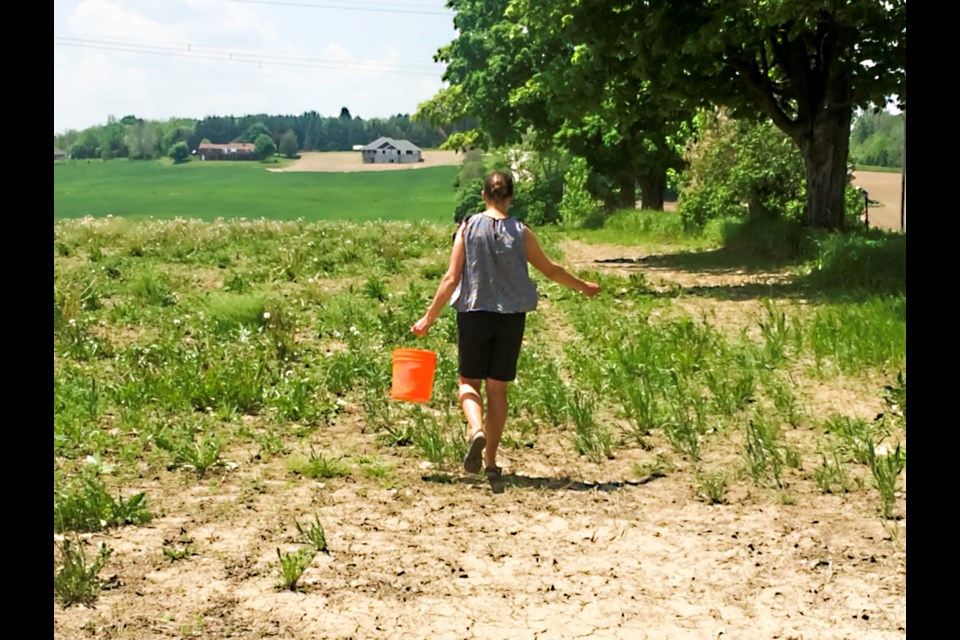It’s a cool, misty morning when a dozen or so volunteers start arriving on site, steaming coffee cups in hand.
Despite a few yawns, there’s an air of excitement because today, something unusual is going to happen. A rare native grassland habitat is about to be restored.
Volunteers and the landowners gather around to learn about the project, and how they are going to help seed the new grassland. By the end of the day, a new native prairie is born. It’ll take a few years to mature, and need some care, but this is remarkable in many ways.
Although this new grassland is being restored primarily for pollinators and birds, some native grasslands are being created for drought-resilient, late-harvest hay. Native grasslands thrive in poor sandy soils, and hit their growth peak in mid-summer. This complements the hay and pasture production of common cool-season Eurasian hayfields, which typically enter dormancy in the summer. Haying for native grasses is in late July or early August, after the babies of ground-nesting birds safely leave their nests.
Under the ground of native grasslands lies another amazing world. Bacteria, fungi, plant roots and many other organisms support each other and offer countless other benefits that help reduce the effects of climate change.
First up is carbon storage. The roots of the native grasses transfer food to bacteria, fungi and many other organisms. This food is stored in the ground in the form of carbon, which makes grasslands a good solution to reduce the amount of greenhouse gases in the atmosphere. The carbon storage capacity of a 100-acre native grassland is the equivalent of taking 49 cars off the road in a year.
One often surprising fact about native grasslands is its roots extend two to four metres deep into the earth. That is the height of a multi-storey building, extending far deeper into the ground than the roots of most trees. The long grassland roots create gaps in compacted soils. Combined with the organic materials in the soil, the same 100-acre parcel of native grassland can store almost four Olympic-size swimming pools of water.
Thanks to this absorbency, grasslands can remove nutrients and other pollutants from rainfall and snow melt. This is because organisms in the soil will break down and feed on the nutrients. As a result, the water flowing from grasslands into rivers will be much cleaner.
Grasslands are only one of many projects the Nottawasaga Valley Conservation Authority (NVCA) takes on to improve water quality and enrich fish and wildlife habitats across the Nottawasaga watershed. But we can’t do it alone. We rely on local landowners, funders and partners to make this happen.
If you’d like to be part of the climate solution and find ways to improve your land, apply to the NVCA’s Healthy Waters program for financial and technical assistance to help plant trees, restore habitat, reduce agricultural erosion and runoff, and protect our rivers, lakes and drinking water sources. Residents of Dufferin County can also apply to the Dufferin Rural Water Quality program. Project cost sharing typically ranges from 50 to 100 per cent to a maximum of $10,000, depending on the project type.
The NVCA is also taking donations on Giving Tuesday to raise additional funds for these environmental restoration projects.
Visit nvca.on.ca to learn more.
Shannon Stephens is the healthy waters program co-ordinator with the Nottawasaga Valley Conservation Authority (NVCA).



